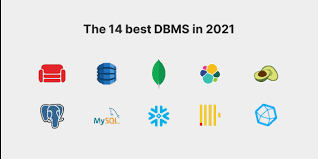
The Power of Database Application Software
Database application software plays a crucial role in modern businesses and organizations by enabling efficient storage, retrieval, and manipulation of data. These software applications are designed to manage large volumes of information in a structured manner, making it easier for users to access and analyze data for decision-making purposes.
One of the key benefits of database application software is its ability to organize data into tables, rows, and columns, allowing for easy categorization and retrieval. This structured approach not only enhances data integrity but also improves the overall efficiency of data management processes.
Database application software also provides powerful querying capabilities, allowing users to extract specific information from the database based on predefined criteria. This feature is particularly useful for generating reports, conducting analysis, and gaining valuable insights from the data stored in the system.
Furthermore, database application software offers robust security features to protect sensitive information from unauthorized access or tampering. By implementing user authentication controls, encryption mechanisms, and access restrictions, organizations can ensure that their data remains secure and compliant with regulatory requirements.
In addition to data management and security features, database application software often includes tools for creating custom forms, reports, and interfaces tailored to specific business needs. This flexibility allows organizations to design applications that align with their unique processes and workflows, enhancing productivity and streamlining operations.
Overall, database application software serves as a cornerstone of modern information management systems, empowering businesses to leverage their data effectively for strategic decision-making and operational efficiency. With its advanced capabilities in data organization, retrieval, analysis, and customization, database application software continues to drive innovation and transformation across industries worldwide.
Understanding Database Application Software: Popular Choices, Examples, Definitions, and Types
- What is most popular database software?
- What are examples of database software?
- What is database application software?
- What are the 4 types of database program?
What is most popular database software?
The most popular database software in the market is undoubtedly MySQL. Known for its reliability, scalability, and ease of use, MySQL is widely used by businesses and organizations of all sizes to manage their data effectively. With a strong community support, robust features, and compatibility with various operating systems, MySQL has established itself as a top choice for building dynamic web applications, handling large datasets, and powering mission-critical systems. Its versatility and performance make it a preferred option for developers and database administrators looking for a trusted solution to meet their data management needs.
What are examples of database software?
When exploring the realm of database software, it’s common to come across various examples that cater to different needs and preferences. Some popular database software options include Oracle Database, Microsoft SQL Server, MySQL, PostgreSQL, MongoDB, and IBM Db2. Each of these platforms offers unique features and capabilities tailored to specific requirements, whether it be scalability, performance, flexibility, or ease of use. By understanding the diverse landscape of database software options available, users can select the most suitable solution to effectively manage their data and drive organizational success.
What is database application software?
Database application software refers to specialized programs designed to manage and organize large volumes of data in a structured manner. These software applications enable users to store, retrieve, and manipulate data efficiently, making it easier to access and analyze information for various purposes. By utilizing tables, rows, and columns to categorize data, database application software ensures data integrity and enhances the overall efficiency of data management processes. With powerful querying capabilities, security features, and customization options, database application software serves as a vital tool for businesses and organizations seeking to harness the power of their data for informed decision-making and operational excellence.
What are the 4 types of database program?
The four main types of database programs are relational databases, NoSQL databases, object-oriented databases, and hierarchical databases. Relational databases are structured around tables with rows and columns, using SQL for querying and managing data relationships. NoSQL databases offer flexibility in handling unstructured or semi-structured data and are commonly used for big data applications. Object-oriented databases store data as objects with attributes and methods, ideal for complex data structures. Hierarchical databases organize data in a tree-like structure with parent-child relationships, suitable for representing networked information systems. Each type of database program has its strengths and is chosen based on the specific requirements of the application or organization.
